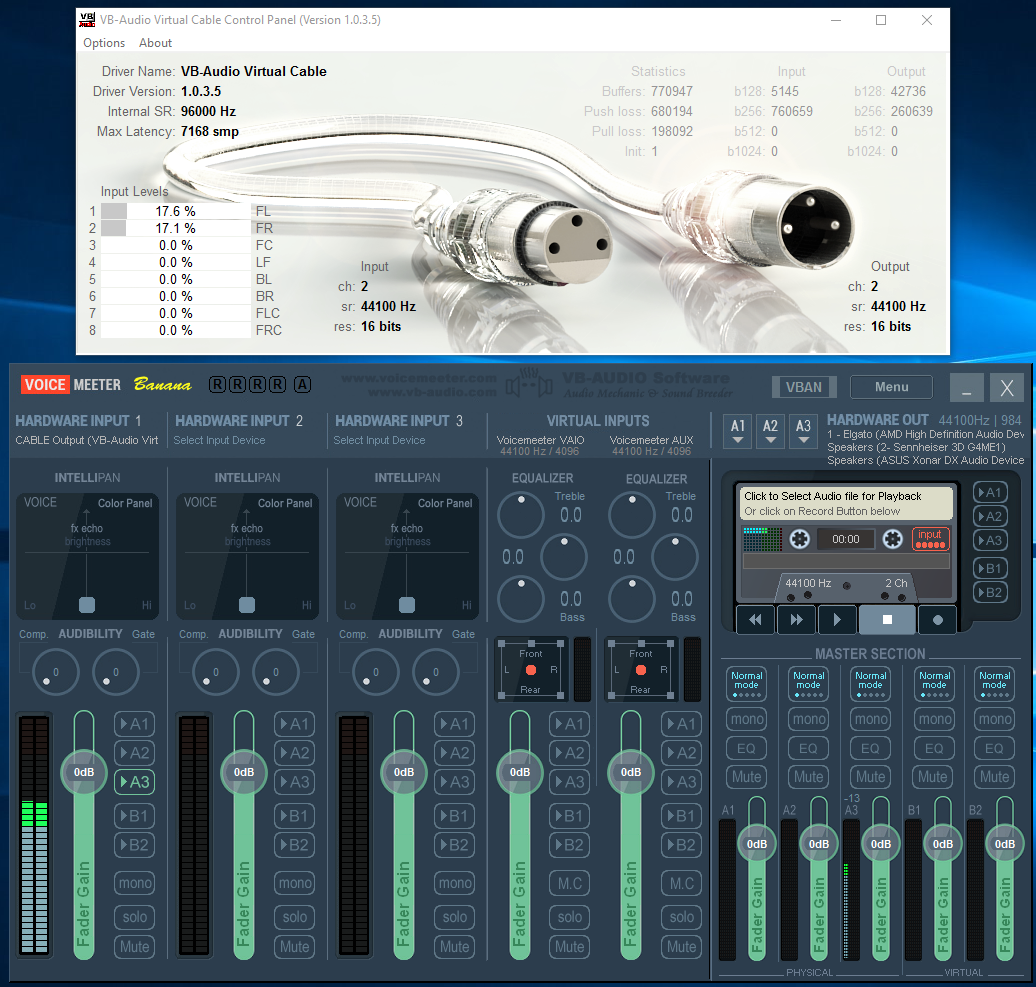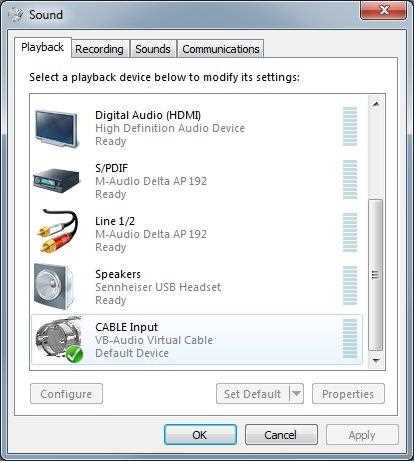

STEP 4Then go to the software you will be using to send the vMix Audio Output to. This gives you a bit more control about what audio you will be sending there. You will then need to go to the Audio Mixer in vMix and activate the A button on any audio inputs you wish to send to this audio output. VB-Audio Cable supports all sample rates from 8 kHz to. All audio signal sent to CABLE Input (Playback audio device) will be sent to the CABLE Output (Recording audio device).

It appears in your system as a new audio device (playback and recording device). Alternatively, you can assign one of the Audio Bus options (such as Bus A) to Cable Input (VB-Audio Virtual Cable). VB-CABLE is an easy to use audio device driver working as a Virtual Audio Cable. Then if you wish to stil be able to monitor the audio in vMix, set the Headphones to either your headphones or speakers.b. Set the Master Output option to Cable Input (VB-Audio Virtual Cable). Go to Settings at the top right and select the Audio Outputs tab. VB-Cable is free to download and install from the link below: /Cable/ STEP 1Download and install VB-Cable from the link above STEP 2Open vMix and load your production preset. Therefore an alternative is to use VB-Cable Virtual Audio Device which allows you to route a virtual audio output that can be seen by most software. 2 17 comments Add a Comment deleted 1 yr. Some 3rd party programs do not support or recognise the vMix Audio output such as some Web Conferencing software (including Zoom, GoToMeeting, WebEx, etc). VB-Audio Cable supports all sample rates from 8 kHz to 192 kHz through all Windows Audio Interfaces (MME, DX, WDM, KS, WASAPI). Been looking around everywhere for this but can't find a download link. When the External Output button at the bottom of vMix is active, this allows you to send a vMix Video and vMix Audio output to some 3rd party programs.


 0 kommentar(er)
0 kommentar(er)
